Livre des Morts
« Ă€ propos d’une confusion tardive dans l’emploi de wnn (ĂŞtre) et wn (ouvrir) »
ENiM 1, 2008, p. 1-6.
 Cet article est l’occasion de souligner qu’une combinaison de vignettes du Livre des Morts peut éclairer le contenu modifié d’une formule « canonique ». Ainsi, la substitution de wnn, « être, exister » par wn, « ouvrir », dans la formule 103 du LdM, relève de la proximité thématique des formules 91/92 et 103, reliées de façon iconique dans le P. Louvre E 17400.
Cet article est l’occasion de souligner qu’une combinaison de vignettes du Livre des Morts peut éclairer le contenu modifié d’une formule « canonique ». Ainsi, la substitution de wnn, « être, exister » par wn, « ouvrir », dans la formule 103 du LdM, relève de la proximité thématique des formules 91/92 et 103, reliées de façon iconique dans le P. Louvre E 17400.
 This contribution is the reason for stressing that a combination of Book of the Dead vignettes can throw a light on the modified contents of a “canonical” spell. Thus, the substitution of wnn, “be, exist” by wn, “open”, in BD spell 103, belongs to the vicinity of the topics of spells 91/92 and 103, joined together in an iconic way in P. Louvre E 17400.
This contribution is the reason for stressing that a combination of Book of the Dead vignettes can throw a light on the modified contents of a “canonical” spell. Thus, the substitution of wnn, “be, exist” by wn, “open”, in BD spell 103, belongs to the vicinity of the topics of spells 91/92 and 103, joined together in an iconic way in P. Louvre E 17400.
 Consulter cet article (48009) -
Consulter cet article (48009) -  Télécharger cet article au format pdf (27293)
Télécharger cet article au format pdf (27293)
« Le papyrus-Amulette de Lyon MusĂ©e des Beaux-Arts H 2425 »
ENiM 6, 2013, p. 159-168.
 Édition du papyrus de Lyon Musée des Beaux-Arts H 2425, document datant de l’époque ptolémaïque rédigé en hiératique avec la formule 100 du Livre des morts accompagnée de son illustration. L’étude de ce manuscrit donne l’occasion de revenir sur la fonction et l’utilisation de cette catégorie d’objets en contexte funéraire.
Édition du papyrus de Lyon Musée des Beaux-Arts H 2425, document datant de l’époque ptolémaïque rédigé en hiératique avec la formule 100 du Livre des morts accompagnée de son illustration. L’étude de ce manuscrit donne l’occasion de revenir sur la fonction et l’utilisation de cette catégorie d’objets en contexte funéraire.
 Edition of the papyrus Lyon Musée des Beaux-Arts H 2425, which can be dated to the Ptolemaic period. It is written in hieratic and contains the Spell 100 of the Book of the Dead with her illustration. The study of this manuscript allows us to reconsider the function and use of this category of objects in funerary context.
Edition of the papyrus Lyon Musée des Beaux-Arts H 2425, which can be dated to the Ptolemaic period. It is written in hieratic and contains the Spell 100 of the Book of the Dead with her illustration. The study of this manuscript allows us to reconsider the function and use of this category of objects in funerary context.
 Consulter cet article (43470) -
Consulter cet article (43470) -  Télécharger cet article au format pdf (22612)
Télécharger cet article au format pdf (22612)
« Le papyrus magico-funĂ©raire Louvre E 5353 »
ENiM 6, 2013, p. 257-289.
 Publication du pLouvre E 5353, d’époque romaine et de provenance inconnue, rĂ©digĂ© au profit d’une certaine Ḥr-ʿnḫ. Le papyrus dont le dĂ©but manque est aujourd’hui constituĂ© de quatre pages dont la dernière est restĂ©e vierge de toute inscription ou dessin. On lit sur les deux premières un assez long texte rĂ©digĂ© en hiĂ©ratique, prĂ©cĂ©dĂ© de quelques vignettes empruntĂ©es au Livre des Morts. Introduit par le titre du ch. 125 et quelques sĂ©quences originales dont un emprunt au « grand dĂ©cret Ă©mis pour la province-igeret », ce texte, oĂą interviennent plusieurs officiants, expose un rituel d’exĂ©cration contre Apophis qui se poursuit avec des extraits du ch. 163 du Livre des Morts et de la scène 72 B du rituel de l’ouverture de la bouche. Divers indices rĂ©partis dans l’ensemble du papyrus invitent Ă penser que les opĂ©rations magiques ici dĂ©crites, bien qu’inattendues dans ce contexte funĂ©raire, Ă©taient rĂ©alisĂ©es dans les derniers jours de Khoiak et concouraient comme le reste du texte Ă la renaissance de la dĂ©funte Ă l’instar d’Osiris.
Publication du pLouvre E 5353, d’époque romaine et de provenance inconnue, rĂ©digĂ© au profit d’une certaine Ḥr-ʿnḫ. Le papyrus dont le dĂ©but manque est aujourd’hui constituĂ© de quatre pages dont la dernière est restĂ©e vierge de toute inscription ou dessin. On lit sur les deux premières un assez long texte rĂ©digĂ© en hiĂ©ratique, prĂ©cĂ©dĂ© de quelques vignettes empruntĂ©es au Livre des Morts. Introduit par le titre du ch. 125 et quelques sĂ©quences originales dont un emprunt au « grand dĂ©cret Ă©mis pour la province-igeret », ce texte, oĂą interviennent plusieurs officiants, expose un rituel d’exĂ©cration contre Apophis qui se poursuit avec des extraits du ch. 163 du Livre des Morts et de la scène 72 B du rituel de l’ouverture de la bouche. Divers indices rĂ©partis dans l’ensemble du papyrus invitent Ă penser que les opĂ©rations magiques ici dĂ©crites, bien qu’inattendues dans ce contexte funĂ©raire, Ă©taient rĂ©alisĂ©es dans les derniers jours de Khoiak et concouraient comme le reste du texte Ă la renaissance de la dĂ©funte Ă l’instar d’Osiris.
 Publication of pLouvre E 5353, of Roman Period and of unknown provenance, written for the benefit of a woman named Ḥr-ʿnḫ. The text, whose beginning is missing, nowadays consists of four pages, the last one left free from any inscription or drawing. On the two first pages, one can read a text, rather long and written in hieratic, preceded by a few illustrations from the Book of the Dead. Introduced by the ch. 125 and some original sequences, among which a short borrowing from the “great decree issued for the nome of igeret”, this text, in which several officiants play a part, includes an execration ritual against Apophis, and goes on with excerpts of ch. 163 of the Book of the Dead, and of (the) scene 72b of the Ritual of opening the mouth. Several clues here and there in the papyrus suggest that the magical rites here described, though unexpected in such a funerary context, were performed during the last days of Khoiak, and contributed, together with the rest of the text, to the deceased’s rebirth like Osiris.
Publication of pLouvre E 5353, of Roman Period and of unknown provenance, written for the benefit of a woman named Ḥr-ʿnḫ. The text, whose beginning is missing, nowadays consists of four pages, the last one left free from any inscription or drawing. On the two first pages, one can read a text, rather long and written in hieratic, preceded by a few illustrations from the Book of the Dead. Introduced by the ch. 125 and some original sequences, among which a short borrowing from the “great decree issued for the nome of igeret”, this text, in which several officiants play a part, includes an execration ritual against Apophis, and goes on with excerpts of ch. 163 of the Book of the Dead, and of (the) scene 72b of the Ritual of opening the mouth. Several clues here and there in the papyrus suggest that the magical rites here described, though unexpected in such a funerary context, were performed during the last days of Khoiak, and contributed, together with the rest of the text, to the deceased’s rebirth like Osiris.
 Consulter cet article (40833) -
Consulter cet article (40833) -  Télécharger cet article au format pdf (21524)
Télécharger cet article au format pdf (21524)
« About the Judges of the Spell 125B of the Book of the Dead »
ENiM 14, 2021, p. 249-259.
 Le chapitre 125B du livre des Morts contient les revendications des profanes vis-à -vis des juges de l’Au-delà , par lesquelles ils proclament l’absence en eux de tout péché. Cette formule est nommée « Confession négative ». Cet article a pour but de mettre en évidence le rôle des juges et examine leurs épithètes, les séquences dans lesquelles ils apparaissent, l’iconographie, et tente d’établir un lien entre des localités spécifiques et les péchés niés.
Le chapitre 125B du livre des Morts contient les revendications des profanes vis-à -vis des juges de l’Au-delà , par lesquelles ils proclament l’absence en eux de tout péché. Cette formule est nommée « Confession négative ». Cet article a pour but de mettre en évidence le rôle des juges et examine leurs épithètes, les séquences dans lesquelles ils apparaissent, l’iconographie, et tente d’établir un lien entre des localités spécifiques et les péchés niés.
 Spell 125B of the Book of the Dead contains the deceased’s claims to the netherworld’s judges in order to show his pureness from any sin. This formula is called “Negative Confession”. This paper tries to highlight the role of the judges and focus on their epithets, the sequences in which they appear, the iconography, and tries to establish a connection between the specific localities and the denied sins.
Spell 125B of the Book of the Dead contains the deceased’s claims to the netherworld’s judges in order to show his pureness from any sin. This formula is called “Negative Confession”. This paper tries to highlight the role of the judges and focus on their epithets, the sequences in which they appear, the iconography, and tries to establish a connection between the specific localities and the denied sins.
 Consulter cet article (31188) -
Consulter cet article (31188) -  Télécharger cet article au format pdf (14657)
Télécharger cet article au format pdf (14657)
« Ă€ propos de quelques fragments de vignettes du Livre des Morts rĂ©cemment dĂ©couverts dans la tombe de PadiamĂ©nopĂ© (TT 33) »
ENiM 15, 2022, p. 279-286.
 La découverte de quelques fragments décorés lors des fouilles dans la première salle hypostyle de la tombe de Padiaménopé a apporté un éclairage supplémentaire sur le Livre des Morts de TT 33. En particulier, des éléments appartenant aux vignettes des formules 1 et 17 ont été mis au jour. Les analyses effectuées sur ces fragments confirment les hypothèses que nous avions émises sur une proximité chronologique entre la tombe de Padiaménopé et celle de Karakhamon (TT 223) d'une part, et sur les correspondances entre la version du Livre des Morts de Padiaménopé et celle de deux papyrus tardifs d’autre part.
La découverte de quelques fragments décorés lors des fouilles dans la première salle hypostyle de la tombe de Padiaménopé a apporté un éclairage supplémentaire sur le Livre des Morts de TT 33. En particulier, des éléments appartenant aux vignettes des formules 1 et 17 ont été mis au jour. Les analyses effectuées sur ces fragments confirment les hypothèses que nous avions émises sur une proximité chronologique entre la tombe de Padiaménopé et celle de Karakhamon (TT 223) d'une part, et sur les correspondances entre la version du Livre des Morts de Padiaménopé et celle de deux papyrus tardifs d’autre part.
 The discovery of some decorated fragments during the excavations in the first pillared hall of the tomb of Padiamenope has shed additional light on the Book of the Dead of TT 33. In particular, elements belonging to the vignettes of spells 1 and 17 were uncovered. The analyses carried out on these fragments confirm the hypotheses that we had put forward on a chronological proximity between the tomb of Padiamenope and that of Karakhamon (TT 223) on the one hand, and on the correspondences between the version of the Book of the Dead of Padiamenope and that of two Late Period papyri on the other.
The discovery of some decorated fragments during the excavations in the first pillared hall of the tomb of Padiamenope has shed additional light on the Book of the Dead of TT 33. In particular, elements belonging to the vignettes of spells 1 and 17 were uncovered. The analyses carried out on these fragments confirm the hypotheses that we had put forward on a chronological proximity between the tomb of Padiamenope and that of Karakhamon (TT 223) on the one hand, and on the correspondences between the version of the Book of the Dead of Padiamenope and that of two Late Period papyri on the other.
 Consulter cet article (24396) -
Consulter cet article (24396) -  Télécharger cet article au format pdf (10372)
Télécharger cet article au format pdf (10372)
ENiM 18 - 2025
4 article(s) - 11 mars 2025.
ENiM 1 à 18 (2008-2025) : 223 articles
4 023 076 téléchargements
8 342 024 consulations.
Index des auteurs

Mots clés

Derniers articles : 
Robert Steven Bianchi
Duplication and Continuity
(ENiM 18, p. 13-36 — 11 mars 2025) 
Frédéric Mougenot
Rénénoutet à la porte de la maison
(ENiM 18, p. 1-12 — 29 janvier 2025) 
CENiM - Mise en ligne des volumes Ă©puisĂ©s : 
 Anne-Sophie von BOMHARD DĂ©cans Ă©gyptiens, CENiM 23, Montpellier, 2020 — (2020)
Anne-Sophie von BOMHARD DĂ©cans Ă©gyptiens, CENiM 23, Montpellier, 2020 — (2020) 
 Jean-Claude Grenier L'Osiris ANTINOOS, CENiM 1, Montpellier, 2008 — (26 dĂ©cembre 2008)
Jean-Claude Grenier L'Osiris ANTINOOS, CENiM 1, Montpellier, 2008 — (26 dĂ©cembre 2008) 
TDENiM - Mise en ligne des volumes Ă©puisĂ©s : 
 Twitter
Twitter 3617343 visites - 11020 visite(s) aujourd’hui - 92 connecté(s)
© ENiM - Une revue d’égyptologie sur internet
Équipe Égypte Nilotique et Méditerranéenne - UMR 5140 - « Archéologie des Sociétés Méditerranéennes » (Cnrs) - Université Paul Valéry - Montpellier III
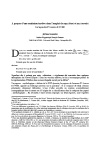
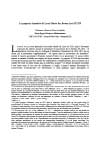
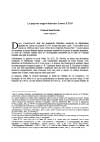
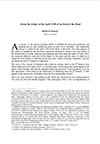
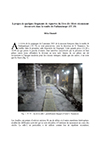





















 Contact
Contact
 Abonnez-vous !
Abonnez-vous ! Équipe Égypte Nilotique et Méditerranéenne
Équipe Égypte Nilotique et Méditerranéenne UMR 5140 « Archéologie des Sociétés Méditerranéennes » (Cnrs)
UMR 5140 « Archéologie des Sociétés Méditerranéennes » (Cnrs) Université Paul Valéry - Montpellier III
Université Paul Valéry - Montpellier III